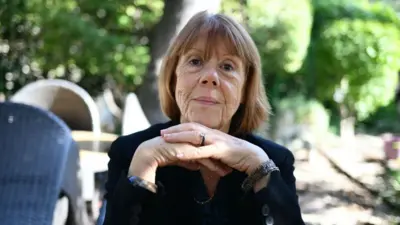We've updated our Privacy and Cookies Policy
We've made some important changes to our Privacy and Cookies Policy and we want you to know what this means for you and your data.
Cancer diversity has 'huge implications'
- Author, James Gallagher
- Role, Health and science reporter, 91ČČąŹ News
A single tumour can be made up of many separate cancers needing different treatments, say researchers.
A team at the Institute of Cancer Research, London, have developed a new technique for measuring the diversity within a cancer.
They showed "extraordinary" differences between cancerous cells and say new targeted drugs may fail as they may be unable to kill all the mutated tissue.
Experts said the findings would have "profound implications" for treatments.
A tumour starts as a single cell, which acquires mutations and eventually divides uncontrollably. But that is not the end of the process.
Cancerous cells continue to mutate and become more aggressive, move round the body and resist drugs.
This process is chaotic and results in a "diverse" tumour containing cancerous cells that have mutated in different ways.
"This has huge implications for medicine," researcher Prof Mel Greaves told the 91ČČąŹ.
His team at the Institute of Cancer Research investigated cancer diversity in five children with leukaemia. They compared mutations in individual cancerous cells with a known database of mutations.
Their results, published in the journal Genome Research, showed patients had between two and 10 genetically distinct leukaemias.
Prof Greaves said: "Every patient has a completely new tree and doesn't have one cancer, they have multiple cancers.
"This is really a technical advance to get at this extraordinary complex diversity, it helps explain why we have such difficulty with advanced diseases."
Tree of cancer
Scientists compare cancer diversity to a tree. The initial mutations - the trunk - will be common to all cancer cells. But then the tumour branches out.
It means a treatment that targets one "branch" or sub-clone of the cancer might slow the disease, but they will never stop it.
Prof Charles Swanton, who researches diversity at the University College London Cancer Institute, told the 91ČČąŹ: "We call it pruning the branches not cutting down the tree, targeted therapies will remove some of the sub-clones, but chopping down the tree is hard to do."
The study investigated leukaemia as it is less diverse than other types of cancer. Other tumours such as melanoma could feasibly be made of hundreds of branches.
Prof Greaves says one implication of the research is that therapies need to be developed which target the trunk of the tumour and that current targeted therapies being researched may not tackle advanced cancers.
Another idea he suggests is focusing on the cancer's surroundings as well.
"If it is diversifying like species in a habitat, why not target the habitat - the blood vessels supplying oxygen or inflammation. There's a lot of interest in that," he said.
The research also emphasises the importance of catching cancers early before they have become too diverse to treat.
Prof Charles Swanton argues: "The bottom line is we need to understand cancer diversity to limit further adaptations, reduce the pace of evolution and prolong the activity of drugs."
Prof Chris Bunce, the research director at Leukaemia and Lymphoma Research, commented: "We are beginning to understand how unique and complex each patient's cancer is and the profound implications that this can have on the success of treatment.
"This study significantly advances our understanding of how cancers start and evolve."
Top Stories
More to explore
Most read
Content is not available








